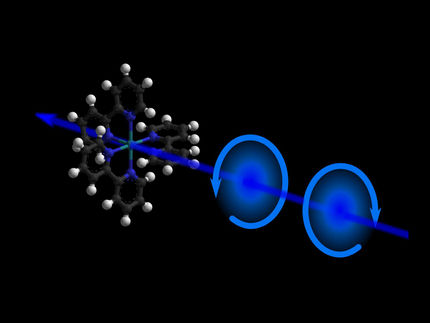Does symmetry breaking mirror the origins of life?
Advertisement
amino acids can break the symmetry of crystals and amplify the crystals' chirality, according to scientists in Canada. Louis Cuccia and Pui Shan Monica Cheung, at Concordia University, Montreal, investigated the crystallisation of ethylenediammonium sulfate (EDS). EDS is an achiral molecule that crystallises into chiral crystals. Normally, EDS crystallises to give the same number of left-handed and right-handed crystals. When Cuccia and Cheung stirred a solution of EDS powder with amino acid additives and ceramic grinding beads, they made unequal mixtures of left-handed and right-handed crystals – a process known as chiral symmetry breaking.
The direction of symmetry breaking depends on the amino acid used and its chirality, says Cuccia. For example, by adding D-serine, Cuccia made only right-handed crystals. When he used L-serine instead, he made only left-handed crystals. Some amino acids showed opposite symmetry breaking while some, like lysine, showed no symmetry directing effect at all.
'Stereospecific interactions of chiral molecules on chiral mineral surfaces have been proposed as a possible origin of terrestrial homochirality,' says Cuccia. 'Not only does this research have exciting implications regarding the origin of homochirality but the interaction of organic molecules with crystalline materials is an always expanding realm for chemists, biochemists and biologists.'
Cuccia's goal is to provide a molecular-level rationale for stereoselective adsorption. He says he plans to use classical crystal growing techniques and modern instrumental and computational methods to study how chiral molecules interact with different chiral crystalline surfaces.
Original publication: Pui Shan Monica Cheung and Louis A. Cuccia, Chem. Commun., 2009.
Organizations
Other news from the department science

Get the chemical industry in your inbox
By submitting this form you agree that LUMITOS AG will send you the newsletter(s) selected above by email. Your data will not be passed on to third parties. Your data will be stored and processed in accordance with our data protection regulations. LUMITOS may contact you by email for the purpose of advertising or market and opinion surveys. You can revoke your consent at any time without giving reasons to LUMITOS AG, Ernst-Augustin-Str. 2, 12489 Berlin, Germany or by e-mail at revoke@lumitos.com with effect for the future. In addition, each email contains a link to unsubscribe from the corresponding newsletter.



























































